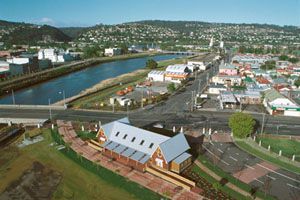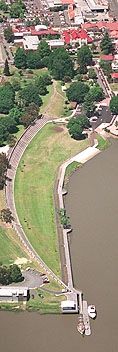

New Series
| Getting Started |

With the increasing availability of low cost, lightweight, miniature
cameras, there has never been a better time to start exploring this field.
How you go about it depends in part on the answer to this question:
Will I make this a hobby or a business?
 More
and more people around the world are flying various types of cameras on
their planes and helicopters, and having a lot of fun doing so. They are
not necessarily trying to offer a commercial service, although after some
tinkering and learning from mistakes, this becomes an option for them.
It is important to know that the moment it becomes a business, the situation
changes.
More
and more people around the world are flying various types of cameras on
their planes and helicopters, and having a lot of fun doing so. They are
not necessarily trying to offer a commercial service, although after some
tinkering and learning from mistakes, this becomes an option for them.
It is important to know that the moment it becomes a business, the situation
changes.
Customers rightly expect a number of things:
The resolution must be good. A cheap looking fuzzy photograph is unacceptable
to clients paying good money for a professional job. Also, a significant
proportion of customers will want enlargements. This all means that sharpness
and clarity are important. The result is that instead of a cheap "point-and-shoot"
camera, you need to use high quality 35mm or medium format equipment,
or if going digital, the very expensive upper end. (These are getting
cheaper though).
The images must be composed correctly. Customers expect pictures to look professional, and the subject to be "framed up" in the shot at least as well as they can do themselves. The problem, of course, is that you are not physically up there, looking through the viewfinder. A pan/tilt mount and reliable video "downlink" is the solution. Without this, it will be difficult to compose a picture at all, let alone professionally.
The shots must be level. Angled horizons look terrible, and have to
be avoided. Solutions include adding a third axis (roll) to the pan/tilt
mount, or paying careful attention to the vehicle's flight characteristics,
or simply to have to have the image rotated by a photo lab, although this
eats into profit.
Good Quality Means More Weight
A good camera generally weighs more than a cheap "point-and-shoot".
In addition, the pan/tilt mount, and the "downlink" equipment
(video camera / transmitter) needed for composing images represents further
weight. The conclusion: professional work requires a vehicle capable  of
carrying the extra weight. If you don't already own a 60 size helicopter
(or 23cc gas equivalent), or, say a "Senior Telemaster" plane,
then you would have to factor in the cost of purchasing one of these.
of
carrying the extra weight. If you don't already own a 60 size helicopter
(or 23cc gas equivalent), or, say a "Senior Telemaster" plane,
then you would have to factor in the cost of purchasing one of these.
Back to the question. So when deciding if you are interested in a hobby or a business, it is worth considering whether you want to devote the necessary time and money to address the issues associated with professional work. Don't despair: one possible avenue is to start with a simple inexpensive setup, and gain experience, having a lot of fun in the process.
There are a lot of skills involved in aerial photography, often best gained by experience. Considerations include film types, shutter speed, aperture settings, filters, time of day, time of year, optimum altitude, and haze issues, not to mention the particular type of flying needed to position the camera in the right place somewhere "up there". Another really special skill that you will build up over time is having a "sixth sense" of knowing where best in the sky to place your machine. This comes from hundreds of experiences looking at the scene from the ground and then seeing how it looks from the air. In time you can almost see the scene from the air, before you send your craft skyward!
Whether the eventual aim is business, or just plain fun, the good thing is that your learning curve can begin right now, even with the simplest equipment.
Next time I'll be looking at the advatages of low altitude.
Web Site: HiCam Aerial Photography
(These articles first appeared on the Hi Cam web site
and have been reproduced with the owner's permission).